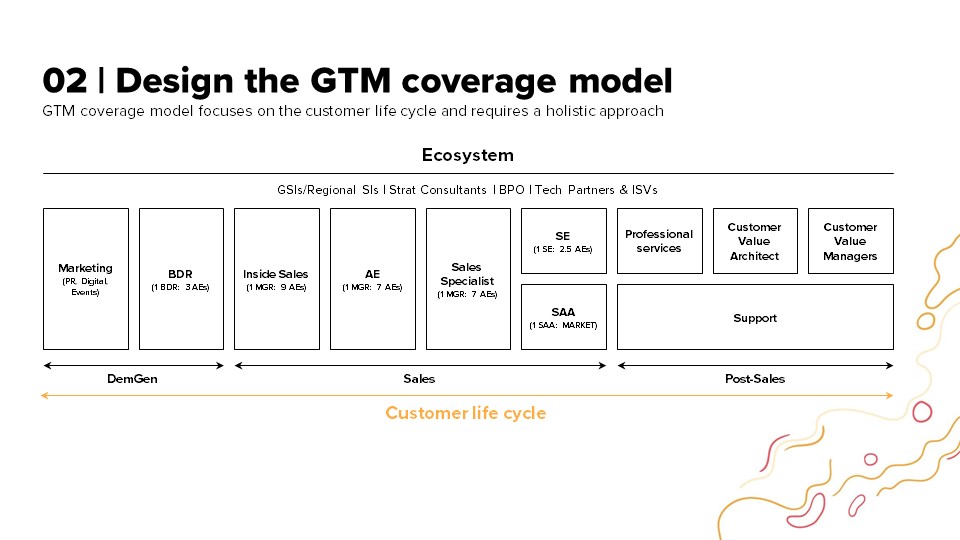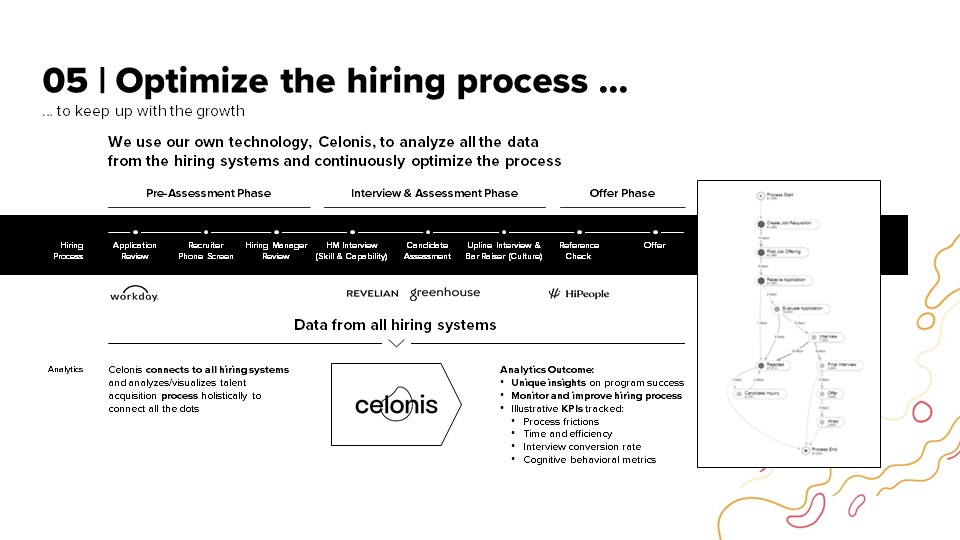All companies depend on growth, and growth has to come from somewhere. How do companies that rely on hypergrowth—expanding as much as 100% yearly—achieve this kind of success? Celonis’ COO, Arsenio Otero, discusses this as a three-stage process with actionable steps.
Designing the GTM model

When approaching a GTM exercise, one thing needs to be very clear: the company’s revenue strategy. This revenue strategy consists of three core questions:
- What is the market opportunity—the problem that needs to be solved?
- What is the product strategy? Single-product or multi-product? Platform or app?
- What is the pricing?
When you can answer these questions confidently, it is time to go to market.
“The market can be as big as we want, but our resources are not unlimited. We must find the sweet spot.”
Knowing GTM segmentation requires understanding the potential impact on the market and how much of that market can be captured. Prioritize those accounts that can match high impact with a high ability to capture the potential market.
In addition, work to adapt GTM motion according to four key dimensions:
- Geography. How close are you to the customers?
- Company size. Small, medium, and large companies all have different needs.
- Industry. Know how to speak the industry’s language.
- Solution. Is the solution complex enough that it requires a specific target?
Take care to think not only about what each of these dimensions looks like but know how to prioritize their importance to one another.
Establish the GTM coverage model

Imagine a coverage model, from end to end, for the full customer life cycle: from demand generation to sales to post-sales.
- Demand Generation. In addition to marketing, do you also need business development representatives (BDR)?
- Sales Cycle. This includes everything from inside sales to account executives to strategic asset allocation.
- Post Sales. Support the professional services and customer managers who guide your clients.
You don’t need to apply the full coverage model to everyone. For strategic accounts, it would make sense to pull out all the stops because of the prize size. For key or small businesses, scale down the number of resources you bring to bear.
Building the GTM organization

After doing the legwork of developing a GTM model, it’s time to actually build your organization—and the strength of this foundation starts with its people.
Hire talent strategically and be two steps ahead with sales capacity. Expect not only to build a team as much as eighteen months in advance but to hire employees that meet criteria that are critical for growth:
- Brains. Can they solve complex problems and reach solutions?
- Commitment. Do they exhibit loyalty and resilience with previous employers?
- Success. Hire those who have proven their value.
- Relevance. Choose employees with the expertise you need.
- Culture. Ensure that your workers will mesh with the values you’ve built.
Optimize the hiring process to keep up with growth

The hiring process is typically a candidate’s first experience with the company. To this end, their hiring journey—from sourcing to interviewing to offering—should be as seamless as possible.
This isn’t only about developing an image as a quality company but ensuring that you can hire at the volume required. These responsibilities should also fall to the hiring manager and not on the backs of the recruitment team.
Every month is critical when onboarding can stretch from six to twelve months. Think of the onboarding process in thirty-day intervals, with clear key performance indicators (KPIs) for each. While most of this onboarding happens on the job, you still need to provide hiring managers with a framework to do their job efficiently.
Executing flawlessly

After hiring a team, you need to execute your vision. Executing the vision can be all the more challenging while simultaneously working at two different speeds: meeting today’s goals while building towards future goals.
Execution is not just a sales process. It takes the form of a cycle, and your goal is to deliver value across the customer journey.
- Generate demand. Develop a simple strategy that drives interest to the top of the funnel. Try to attach data to every action and make your plays repeatable at scale.
- Land the account. Know your metrics, and develop a robust qualification method to identify the best opportunities. On top of all this, build a compensation structure to drive desired behavior.
- Show value and expand. Obsess about delivering value to your customers. Put a heavy focus on your adoption and advocacy metrics while continuously absorbing feedback from your customers and your internal team.
In an operational governance model, everyone in the organization should know their goals—weekly and bi-weekly, monthly and quarterly, bi-annually, and annually. No one should be surprised! These benchmarks should be well-defined.
At last, have tools and processes to enable and support business growth. Processes and tools are the back ends of execution.
“You cannot achieve hypergrowth in a spreadsheet.”
These tools and processes should center around the customer and not yourself. On top of this, these systems should allow you to execute and gather data and add value in real time.
The post Lessons from Salesforce to Celonis: Tips to Scale Globally with Celonis COO Arsenio Otero (Video) appeared first on SaaStr.
via https://www.aiupnow.com
Amelia Ibarra, Khareem Sudlow
